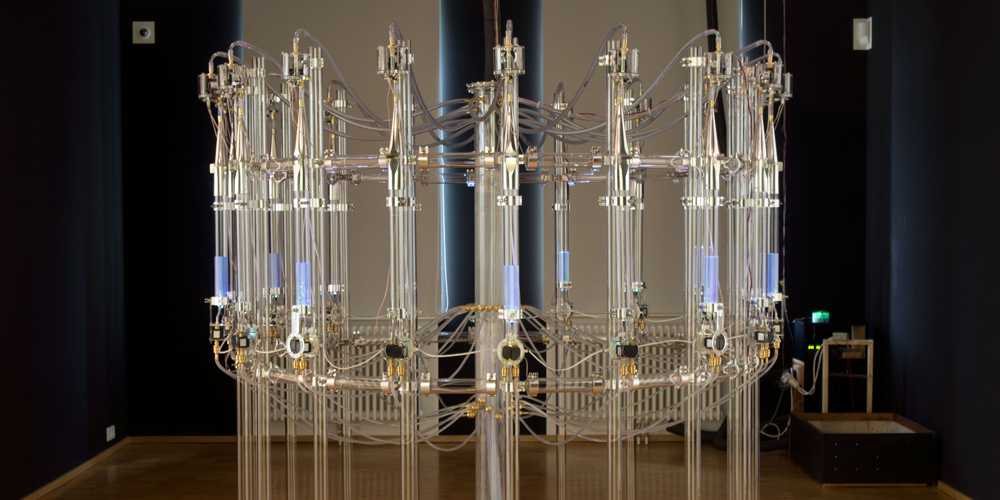Nomination
The kinetic sculpture aura calculata weaves a continuously changing microtonal sound carpet by the variation of the water levels in 18 transparent acrylic glass pipes. The triangular growth pattern of a Pacific sea mussel exhibited on a separate column refers to the driving principle behind the sculpture: The tones are created without any directing control instance, but simply by the musical adaption of the self-organization principle of cellular automata. Each pipe has its own electronics that detect whether its neighbors are playing or not. Similar to a football stadium wave, the circularly arranged pipes decide by a simple local rule, how they react to their own and their neighbors’ activity.
When a pipe turns active it opens the air valve. The played pitch depends on the regulation of the water flow and the water column rises or falls depending on how active a pipe was during the last steps. This changes the pitch of the played tone over the range of more than an octave, but it also radically changes its timbre.
Credits
Tim Otto Roth (DE), born 1974 in Oppenau/Black Forest, is a conceptual artist and composer known for his large installations in public space–often realized in collaboration with leading scientific institutions around the world. The question about space is the golden thread running through his oeuvre, which is expressed by the projective translation of objects into shadows by the medium of light, his fascination with the nocturnal firmament, or the creation of sound environments using space as a synthesizer. Most of Roth’s works can be considered as a plea for a “physics of art”, as they demonstrate the physical dimension of phenomena that also affects the body.



